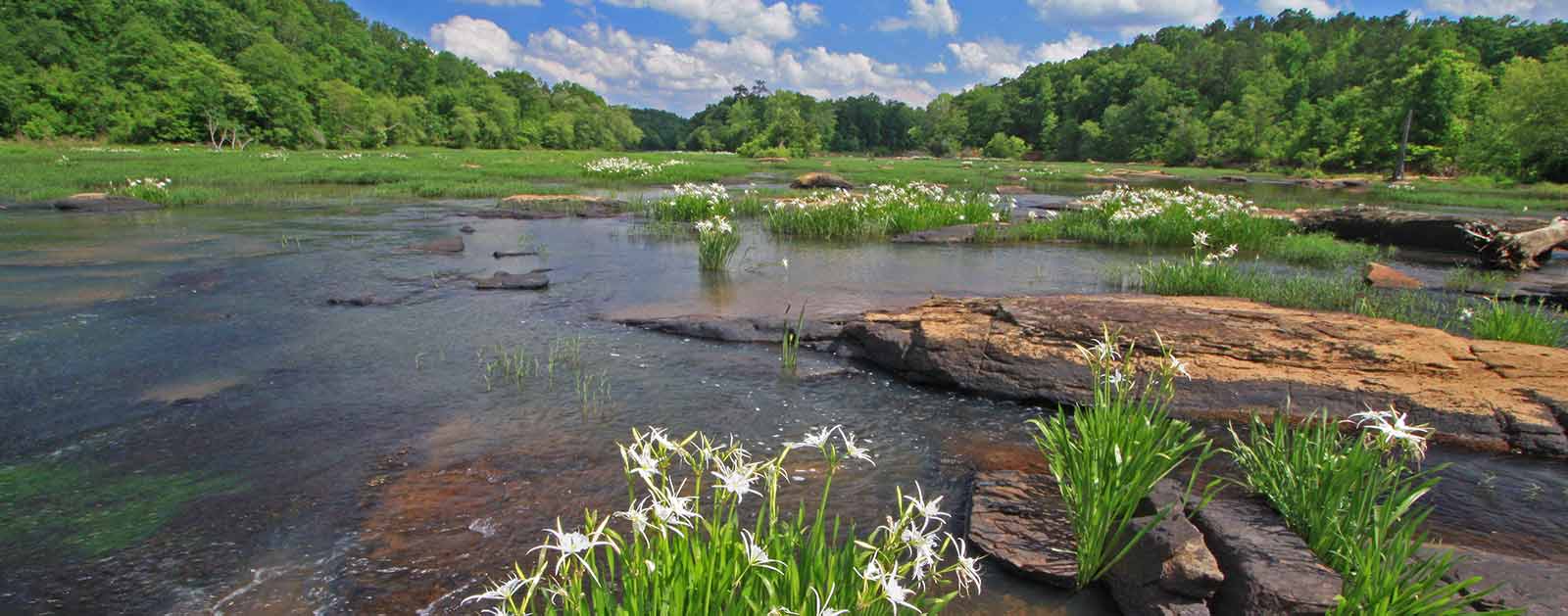Finding the Flint

What happens when a community loses sight of its river? When the streams that feed a river’s source are put underground into pipes, does a river disappear? When a cityscape no longer interacts with a river — or even acknowledges its presence — does the river just vanish?
Of course not. Rivers don’t just disappear. But sometimes, rivers and streams can be incredibly hard to find in the built environment of a modern American city.
That’s the case with the headwaters of Georgia’s Flint River. A regionally important water source, a gem of Georgia outdoors, and a haven of biodiversity, the Flint begins ignominiously as an urban stream traveling through ditches and pipes on the south side of Metro Atlanta. Until recently, few southside residents had an awareness of the river beginning in their communities, much less an awareness of where exactly it flows through the area’s neighborhoods, industrial corridors, and wooded floodplains. The reality is, millions of people have visited these urban headwaters: the Flint River runs in pipes beneath one of the world’s busiest airports and a major air travel hub, Hartsfield-Jackson Atlanta International Airport.
It’s not only at the airport that the Flint River is invisible. As airport-area communities have grown, the river’s headwaters have been largely forgotten in the development of the area. That’s all now changing, thanks to Finding the Flint, an initiative that American Rivers launched together with our partners at The Conservation Fund and the Atlanta Regional Commission in 2017.
Finding the Flint envisions the restoration of urban streams and reconnection of communities to the Flint River headwaters, both physically and culturally. While we can’t daylight the river under the airport, a wide array of collaborators have mapped opportunities for meaningful preservation and restoration of greenspaces along the headwaters. The effort has created a table for diverse stakeholders to come together around the river’s restoration.
We and our partners throughout the area have a long way to go to create public greenspaces, improve water quality, and address increasing flooding problems along throughout this urban headwaters area. But seeing local communities rally around an inspiring vision for the river in their midst has provided an undeniable spark to these collective efforts to restore Georgia’s Flint River at its source.
